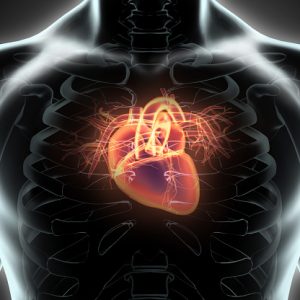
Symptoms of cardiomyopathy include the following:
- Breathlessness with exertion or even at rest
- Swelling of the legs, ankles, and feet
- Bloating of the abdomen due to fluid buildup
- Cough while lying down
- Fatigue
- Irregular heartbeats that feel rapid, pounding, or fluttering
- Chest pain
- Dizziness, lightheadedness, and fainting
Regardless of the type of cardiomyopathy a patient has, the signs and symptoms progressively worsen unless treated. In some patients, this worsening happens faster, while the severity may worsen for others over the course of a longer period.
Cardiomyopathy types
There are different types of cardiomyopathy: dilated (DCM), hypertrophic, restrictive, ischemic, arrhythmogenic right ventricular dysplasia (ARVD), alcoholic cardiomyopathy, and left ventricular non-compaction. There are various causes for cardiomyopathy that include genetic conditions, long-term high blood pressure, chronic rapid heart rate, pregnancy complications, metabolic disorders, nutritional deficiencies, drinking too much alcohol over a prolonged period, use of chemotherapy drugs and radiation to treat cancer, and use of cocaine.
Dilated cardiomyopathy (DCM)
Dilated cardiomyopathy, or DCM for short, is the most common form of nonischemic cardiomyopathy and it is defined as a heart’s decreased ability to pump blood because its main chamber (the left ventricle) is enlarged, weak, and dilated. At first, these chambers respond by stretching to hold more blood to circulate through the body. This helps to strengthen the contractions of the heart and keep blood pumping for a short time. Unfortunately, over time, the heart muscle walls get weaker and cannot pump as strongly. The kidneys will jump into action by retaining fluid and sodium, but if this fluid builds up in the legs, ankles, feet, lungs, or other organs, the body gets congested and the patient will develop congestive heart failure.
Hypertrophic cardiomyopathy (HCM)
Hypertrophic cardiomyopathy is when the heart muscle (myocardium) becomes thickened (hypertrophied) and has a harder time pumping blood. This disease often goes undiagnosed because many people with it have very few or minor symptoms. People with HCM generally lead normal lives without significant problems. However, a small percentage of these people develop shortness of breath, chest pain, or other problems with the heart’s electrical system. This often results in life-threatening abnormal heart rhythms (arrhythmias).
Restrictive cardiomyopathy
This is the rarest form of cardiomyopathy and is a condition where the walls of the lower chambers of the heart (ventricles) are unusually rigid and lack the flexibility needed to expand as they fill with blood. The diastolic function (the ability of the heart to fill with blood) is abnormal, even if the pumping or systolic function of the ventricle works normally. This makes it harder for the ventricles to fill with blood, and as time goes on, the heart loses its ability to pump blood. This leads to heart failure. The causes of RC are often unknown but can include a buildup of scar tissue, the buildup of abnormal proteins, chemotherapy of chest exposure to radiation, excess iron in the heart, and other systemic diseases.
Ischemic cardiomyopathy
Ischemic cardiomyopathy is a serious condition if left untreated and can lead to heart failure, blood clots, or death. It occurs when coronary artery disease is present, or after a heart attack, and an artery to the heart is temporarily blocked. This prevents oxygen-rich blood from entering the heart, causing the heart muscle to enlarge, dilate, or weaken. Since the heart now has a reduced ability to pump blood to the body, IC develops. Causes include coronary heart disease, heart attacks, high blood pressure, high cholesterol, and tobacco use.
Also read: How to treat ischemic cardiomyopathy? Causes, symptoms, and prognosis
Arrhythmogenic right ventricular dysplasia (ARVD)
This type of cardiomyopathy is a rare form in which the heart muscle of the right ventricle (RV) is replaced by fat or fibrous tissue. The RV becomes dilated and contracts poorly, reducing the ability of the heart to pump blood. Patients with this condition often have abnormal heart rhythms, leading to an increased risk of sudden cardiac arrest or death.
Alcoholic cardiomyopathy
This form of heart disease is directly caused by alcohol abuse. Long-term abuse of alcohol weakens and thins the heart muscle, weakening its ability to pump blood. Whenever the heart is unable to efficiently pump blood, the lack of circulation affects the body’s major functions, leading to possible heart failure and other life-threatening problems.
Left ventricular non-compaction (LVNC)
Left ventricular non-compaction, or LVNC for short, is a condition where the muscular wall of the left ventricle of the heart becomes like a sponge. This “spongey” texture is caused by the formation of channels, known as trabeculations that form in the heart muscle. This affects the heart’s ability to pump blood through the body and affects the electrical signaling of the heart. This condition cannot be cured, but there are treatments available to combat the symptoms.
Prevention
Each type of cardiomyopathy is serious and has life-threatening consequences if it is not diagnosed early or left untreated. In many cases, the disease is untreatable, and if you have a family history of the condition, you should notify your doctor.
You can still make healthy lifestyle changes to lower your risk of developing heart disease such as avoiding alcohol or cocaine use; controlling high blood pressure, high cholesterol, and diabetes; eating a healthy diet; exercising regularly; getting enough sleep, and reducing your stress.
Related: Ventricular tachycardia: Causes, types, symptoms, and treatment